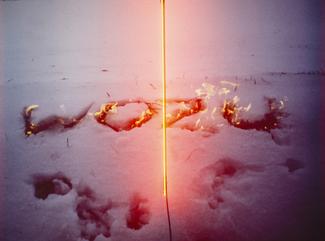
La Lumière, un outil pour penser le monde Piotr Kowalski
Dates : Mercredi 6 mars 2024 - Mercredi 17 avril 2024
Vernissage : Vernissage mer 6 Mar 2024, 18:00
Adresse : Espace Meyer Zafra, 4 rue Malher, 75004 Paris
Espace Meyer Zafra
4 rue Malher
75004 Paris
France
Description, horaires...
Following the announcement of the representation of Polish artist Piotr Kowalski, Espace Meyer Zafra is pleased to dedicate his first solo exhibition at the gallery, entitled Light, a tool for thinking the world. From March 6 to April 17, 2024, the exhibition will bring together emblematic works by the artist.
“Piotr Kowalski’s position is unique, combining Arts and Science, and keeping with the times alike those of Leonardo Da Vinci and Dürer in their eras. His art has often been compared to the movement of lumino-kinetics with which he shares certain conceptions: it is in reality closer to that of Takis or Jean Dupuy, technological and experimental, very defined and non-formal, located between materiality and the virtual and always looking for the novelty. » - Serge Lemoine
Piotr Kowalski is a major and marginal figure in Art History. Kowalski uses technology like we use colors in painting. Throughout Kowalski’s work, the action of Science on artistic conception is constant, his work essentially focusing on the relationship between physical laws and matter, just like the poetry present there. Unlike the artists of the 60s who strongly believe that science heralds a new era for art (Kinetic art/Mec art), Kowalski only uses modern technology as a means and not as an end.
“You have to use objective things, external (to art), to be free (..). There is no dichotomy between science and life for me, they are part of the same world. » - Piotr Kowalski
The exhibition Light, a tool for thinking the world, explores experiments carried out by the artist questioning fundamental principles. The light works presented in this exhibition were mostly created during the 1970s. Unlike the previous decade, marked by intense production, Kowalski devoted himself during the 1970s to large-scale projects. Nevertheless, he continues his investigations of the world through an increased use of neon, the medium at the center of this exhibition.
Invented in 1910 by Georges Claude, a French national, the neon was quickly exploited by the advertising world. In 2012, the Maison Rouge presented a particularly important exhibition dedicated solely to the medium of neon: Néon. Who’s afraid of red, yellow and blue? In the presentation text of this event, the exhibition curator, David Rosenberg, describes the history of neon in the history of art. Used in the 1930s and at the end of the 1940s notably by Lucio Fontana, the use of neon in the field of Art was developed particularly in the 1960s. Piotr Kowalski, one of the pioneers in this field, used this medium for its strong ability to communicate in order to highlight scientific, cultural or philosophical questions.
Within this exhibition, the viewer is invited to objectively question principles such as symmetry in the works Room, Room (1973), Reflet, Reflet (1991) or even perspective in the works Perspective New York (1973-1997), Perspective Dhuizon (1973-1997). Whereas in the work Wozu (1978), a word that we can translate as What’s the point?, the viewer will be confronted to a more philosophical, subjective questioning.